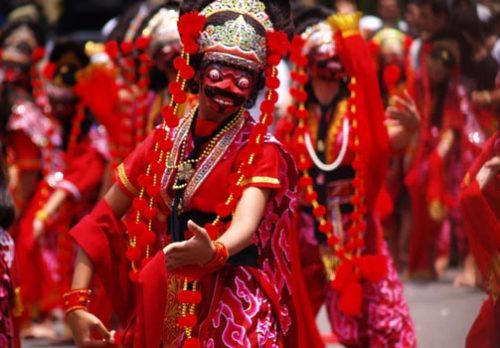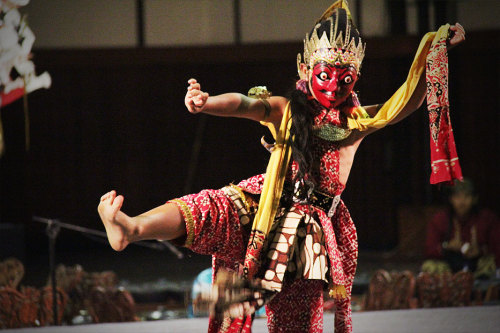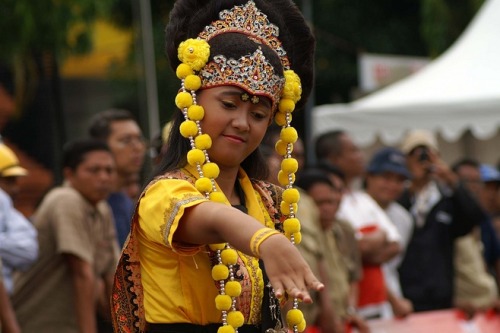#taritopeng
The eyes of Tari Topeng dancer.
by @wasnadi_slangit
#desaslangitkecklangenankabcirebon
#taritopeng
#taritopengcirebon
#traditionaldancer
#indonesiantraditionaldancer
#taritopengdancer
#beautifulindonesia
#beautifulindonesianculture
#beautifulindonesiantraditionaldancer
#fujifilmxt2
#fujinon1655mmf28wr (at Cirebon,Jabar)
https://www.instagram.com/p/B-i3HAbDZln/?igshid=622mo5na6z5g
Post link
An essential quality of Javanese dance is the lack of a term synonymous with dancer.
“Despite the terms igel, beksa, joged, and taya which all mean ‘dance’, the Javanese language in the Yogjakarta tradition does not have a noun to name the person who is dancing. The Javanese words referring to the word ‘dance' joged, igel, beksa and tayacan be transformed to 'dancer’ by adding the prefix pe- (for example, penjoged, pengigel, pembeksa and petaya). But, these word forms do not exist. It is significant that there is no term to name the dancer; the only way of naming the performer is by describing the person who performs the dance, that is, the 'doer’ of the dance.” (Ben Suharto)
These observations were recounted to me by my own teacher, who had been a pupil of Ben Suharto, quoted above. There being no word for “dancer” is significant and deeply rooted in the tradition among performers in relation to spectators. According to tradition, the dancer must maintain a bearing that does not reflect their individual self. There is a Javanese expression that sums it up nicely: “Aja kok tonton anggonku njoged, nanging tontonen jogedku” (“Don’t look at how I am dancing, but look at my dance”) (Hardjosoebroto, 1962).
Pictured above: artists performing TariTopeng, from Cirebon, Java. (x)
I’m reposting this, since it didn’t seem to get any exposure when I had first posted it. I’d love to share my love for Indonesian dance, and hopefully can help educate people who might not otherwise be introduced to it in its many forms.
Post link





